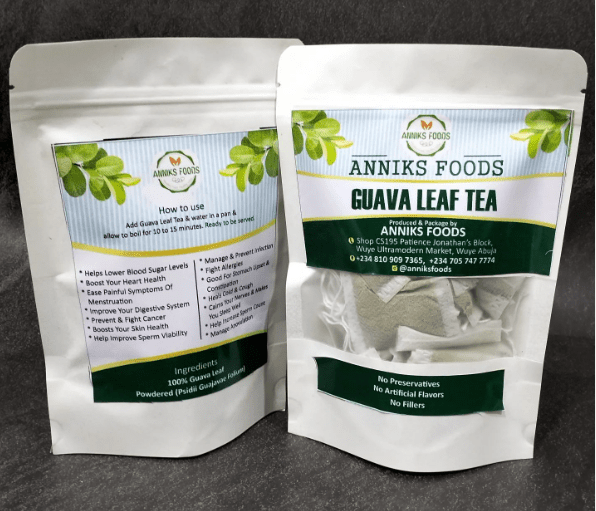Here’s why this nutritious root plant can spice up your life
Spices aren’t just a way to add zest and flavor to your favorite dishes. Many also provide hefty doses of antioxidants, nutrients, minerals, and vitamins.
Ginger, which comes from a flowering root plant, especially provides a variety of great health benefits. Found first in southeast Asia, the spice has been used in Eastern medicine practices since the 9th century — and is also a staple of Asian, Indian and Caribbean cuisines.
Dietitian Candace O’Neill RD, LDN, shares why ginger is both delicious and highly nutritious and shares the best ways to add this versatile spice into our daily diet.
What are the benefits of ginger?
By appearances alone, ginger doesn’t look like a body booster. When you’re eating ginger, you’re eating the root (called the rhizome), which resembles a smaller sweet potato or even a gnarled tree.
However, ginger packs a powerful punch. Not only does it contain vitamin C, magnesium and potassium, but it also provides multiple health benefits.
Pain relief
Fresh ginger boasts a potent compound called gingerol, which includes antioxidant properties and reduces inflammatory enzymes. As a result, ginger is “beneficial for inflammatory-related conditions and pain relief, specifically menstrual cramps and also arthritis-based conditions,” O’Neill says. For example, in a clinical trial, ginger showed promise at improving knee pain associated with osteoarthritis.
Dried ginger also contains anti-inflammatory compounds, but gingerol changes form when heated into a different compound that’s not as effective.

Interestingly, O’Neill says ginger’s been linked more to long-term pain relief rather than immediate pain relief. “When you take over-the-counter pain medication, it helps in an instant. Researchers studying the effects of ginger found the spice has a delayed effect. In a few days, people may anecdotally say, ‘You know what, I feel like I’m in less pain.’”
Improves blood sugar regulation
Gingerol could also explain ginger’s role in keeping blood sugar levels steady. Doing the latter is key to controlling the long-term health effects of Type 2 diabetes. “The ginger reduces enzymes that break down carbohydrates and so it helps with glucose (sugar) metabolism,” says O’Neill.
People with Type 2 diabetes often don’t produce enough insulin, which is key to ensuring glucose circulates throughout the body and doesn’t accumulate in the bloodstream. Ginger can also help regulate this: Studies have also found that ginger encourages your muscles to absorb glucose, without requiring you to take extra insulin.
This could lead to additional positive side effects. “When you’re insulin resistant, sometimes it can make it harder to lose weight,” O’Neill says. “Improved blood sugar regulation may help with weight loss and potentially make your body more sensitive to insulin.”
Reduces nausea
As a kid, your parents might have given you ginger ale to treat an upset stomach. However, it’s likely not the ginger that settled your tummy. “Most ginger ales don’t actually contain real ginger,” says O’Neill. “It’s probably more of the carbonation that helps settle someone’s stomach.”
Eating fresh ginger can help with various forms of nausea, however, including morning sickness, motion sickness and the side effects of some chemotherapy regimens. “Ginger may be helpful because it helps increase the way food moves through your GI tract, called gastric motility, and block serotonin receptors in our gut lining.” This can help silence nerves that trigger your vomiting reflex.
May help lower cholesterol
One study found that people who took ginger pills daily saw decreased levels of triglycerides, total cholesterol and bad cholesterol (otherwise known as low-density lipoprotein, or LDL) after 45 days, as compared to people who were given a placebo. However, more research is needed to definitively say that you can take ginger to lower cholesterol.
May inhibit bacteria growth
Some studies found that certain elements found in ginger (like gingerol) may have antibacterial properties, although more research is needed to draw definitive conclusions.
Easy ways to incorporate ginger into your diet
Ginger is easy to add to your diet, in no small part because a little goes a long way. “People sometimes describe fresh ginger as tasting spicy-sweet, while dry ginger has more of a pungent taste,” O’Neill says.
You can buy ginger in fresh, dried or powdered form — or take ginger root and grate or ground it yourself at home to your desired consistency. “Ginger can be found in a few options at the grocery store,” O’Neill says. “You can purchase just the root itself. You can buy it dried, or you can consume pickled ginger or ginger in cheese.”
Ginger tea also offers health benefits, especially if you’re looking for relief from inflammatory conditions or nausea. However, O’Neill notes another common liquid, ginger beer, may not be the best choice for relief.
“Sometimes ginger beer has a lot of added sugar, which is not necessarily something that’s a health-forward thing to consume, especially if you’re concerned about an inflammatory condition like arthritis,” she says. “Drinking ginger tea would be probably more advantageous.”
How to store fresh ginger
You can find ginger these days at most grocery stores as well as at specialty shops. Either way, it’s best to pick a piece that looks and feels, well, fresh. Ginger should be firm, not soft or squishy, with yellow flesh. Its outer skin also shouldn’t be shriveled or show any signs of being limp or moldy, like discolored spots or a slimy texture.
Ginger root stays fresh in the refrigerator for about three weeks. Store it in a plastic bag — just squeeze the air out first — a paper bag, or an airtight glass container, and place it in the crisper. To keep it usable longer, store ginger root in the freezer and grate off a little chunk each time you’re using it in a recipe.
Storing dried ginger requires equal care. Be sure it’s in an airtight container and kept in a cool, dark place, such as a kitchen cabinet.
Popular recipes with ginger
You can use ginger in vegetables, stir-fries, chicken dishes, soups, curries, sauces for main dishes, salad dressings, desserts, smoothies and even pancakes and tea. Sprinkle it on applesauce, or vegetables before roasting them.
Some common ginger-augmented recipes include:
- Ginger spice smoothie.
- Grilled tuna with avocado, cucumber and ginger salsa.
- Lime, herb, ginger and jalapeno chicken salad wrap.
- Turkey patties with cilantro, scallions and ginger.
- Ginger sweet potato pancakes.
“You can have fresh ginger root and grate it, or cut a chunk and keep it in water,” O’Neill says. “That’s a great thing to do, or add it into a smoothie or stir-fry. The options are endless. The benefits are long-term.”
How much ginger should you take or use?
There’s no magic amount of ginger that makes a difference for inflammatory-related conditions and pain relief. However, don’t start taking a ginger supplement before consulting your doctor.
“High-dose supplements can actually cause nausea and gastric reflux,” O’Neill says. “High doses of ginger can also interact with blood-thinning medication. It’s always important to speak to a practitioner before you start taking any dietary supplement.”
Get in the habit of incorporating ginger-rich foods into your diet on an ongoing basis, so you experience the most health benefits. Luckily, because ginger tastes so good, we’re more inclined to eat it. “Which is important, because then we’re going to be introducing a healthier diet pattern,” O’Neill says. “This can help with reducing the risk of chronic disease — or helping to manage chronic disease.”
Cleveland clinic





















